Serotonin hydrochloride

Serotonin hydrochloride structure
|
Common Name | Serotonin hydrochloride | ||
|---|---|---|---|---|
| CAS Number | 153-98-0 | Molecular Weight | 212.676 | |
| Density | N/A | Boiling Point | 416.1ºC at 760 mmHg | |
| Molecular Formula | C10H13ClN2O | Melting Point | 149-154 °C(lit.) | |
| MSDS | Chinese USA | Flash Point | 205.4ºC | |
| Symbol |

GHS07 |
Signal Word | Warning | |
Use of Serotonin hydrochlorideSerotonin hydrochloride is a monoamine neurotransmitter in the CNS and an endogenous 5-HT receptor agonist. Serotonin hydrochloride is also a catechol O-methyltransferase (COMT) inhibitor with a Ki of 44 μM. |
| Name | Serotonin hydrochloride |
|---|---|
| Synonym | More Synonyms |
| Description | Serotonin hydrochloride is a monoamine neurotransmitter in the CNS and an endogenous 5-HT receptor agonist. Serotonin hydrochloride is also a catechol O-methyltransferase (COMT) inhibitor with a Ki of 44 μM. |
|---|---|
| Related Catalog | |
| Target |
5-HT receptor[1] Ki: 44 μM (COMT)[1] |
| In Vitro | Serotonin hydrochloride is a monoamine neurotransmitter in the CNS and an endogenous 5-HT receptor agonist. Serotonin hydrochloride also inhibits catechol O-methyltransferase (COMT), an enzyme that contributes to modultion the perception of pain, via non-competitive binding to the site bound by catechol substrates with a binding affinity comparable to the binding affinity of catechol itself (Ki= 44 μM). Results show that addition of 100 μM of Serotonin hydrochloride decreases the reaction velocity of COMT[1]. |
| In Vivo | Serotonin hydrochloride produces robust hypersensitivity compare to saline-treated controls (p<0.001)[1]. A significant increase in colonic 5-HT content is observed in IL-13-/- mice receiving Serotonin hydrochloride compare to IL-13-/- receiving vehicle following induction of DSS colitis[2]. |
| Cell Assay | For macrophage culture, peritoneal cavity cells are collected from WT and IL-13-/- mice with or without dextran sodium sulfate (DSS) treatment and cultured. Cells are plated at a concentration of 3.0×106 cells per millilitre, and treated with either lipopolysaccharides (LPS); (100 ng/mL) or Serotonin hydrochloride (10-10 M) for 24 hours. The culture supernatant are collected and stored in -80°C until determination of cytokine levels using protein array system[2]. |
| Animal Admin | Dextran sodium sulfate (DSS) colitis is induced by orally administering 5% DSS in drinking water for 5 days. In a separate experiment, IL-13-/- mice are injected subcutaneously with 100 mg/kg of Serotonin hydrochloride (5-HTP) twice daily for 8 days beginning 3 days prior to induction of DSS colitis; whereas, the control IL-13-/- mice receive saline as vehicle. Animals are anaesthetized prior to euthanization via cervical dislocation at the conclusion of each experiment or if they reach a predetermined end point (ie, loss of ≥20% body weight and/or significant deterioration of body condition)[2]. |
| References |
| Boiling Point | 416.1ºC at 760 mmHg |
|---|---|
| Melting Point | 149-154 °C(lit.) |
| Molecular Formula | C10H13ClN2O |
| Molecular Weight | 212.676 |
| Flash Point | 205.4ºC |
| Exact Mass | 212.071640 |
| PSA | 62.04000 |
| LogP | 2.87700 |
| Vapour Pressure | 1.63E-07mmHg at 25°C |
| InChIKey | MDIGAZPGKJFIAH-UHFFFAOYSA-N |
| SMILES | Cl.NCCc1c[nH]c2ccc(O)cc12 |
| Storage condition | 2-8°C |
| Stability | Stable, but light sensitive and hygroscopic. Incompatible with strong oxidizing agents. |
| Water Solubility | soluble |
| Symbol |

GHS07 |
|---|---|
| Signal Word | Warning |
| Hazard Statements | H302-H312-H315-H319-H332-H335 |
| Precautionary Statements | P261-P280-P305 + P351 + P338 |
| Personal Protective Equipment | dust mask type N95 (US);Eyeshields;Gloves |
| Hazard Codes | Xn:Harmful; |
| Risk Phrases | R20/21/22;R36/37/38 |
| Safety Phrases | S22-S26-S36 |
| RIDADR | UN2811 |
| WGK Germany | 3 |
| RTECS | NM2571000 |
| Packaging Group | III |
| Hazard Class | 6.1 |
| HS Code | 2933990090 |
| Precursor 0 | |
|---|---|
| DownStream 10 | |
| HS Code | 2933990090 |
|---|---|
| Summary | 2933990090. heterocyclic compounds with nitrogen hetero-atom(s) only. VAT:17.0%. Tax rebate rate:13.0%. . MFN tariff:6.5%. General tariff:20.0% |
|
Chemical genetics reveals a complex functional ground state of neural stem cells.
Nat. Chem. Biol. 3(5) , 268-273, (2007) The identification of self-renewing and multipotent neural stem cells (NSCs) in the mammalian brain holds promise for the treatment of neurological diseases and has yielded new insight into brain canc... |
|
|
Simultaneous determination of the repertoire of classical neurotransmitters released from embryonal carcinoma stem cells using online microdialysis coupled with hydrophilic interaction chromatography–tandem mass spectrometry
Anal. Chim. Acta 849 , 70-9, (2014) [Display omitted] |
|
|
Evaluation of thein vitro/in vivodrug interaction potential of BST204, a purified dry extract of ginseng, and its four bioactive ginsenosides through cytochrome P450 inhibition/induction and UDP-glucuronosyltransferase inhibition
Food Chem. Toxicol. 68 , 117-27, (2014) • BST204 is a purified dry extract of ginseng containing high amounts of Rh2 and Rg3. • BST204 had only weak inhibitory effects on nine CYPs and five UGTs. • It is unlikely that BST204 alter pharmacok... |
| 3-(2-aminoethyl)-1H-indol-5-ol,hydrochloride |
| 3-(2-Aminoethyl)-1H-indol-5-ol hydrochloride |
| 3-(2-Aminoethyl)-5-hydroxyindole hydrochloride,5-HT,5-Hydroxytryptamine hydrochloride |
| 5-hydroxytryptamine hydrochloride |
| Serotonin HCl |
| 1H-Indol-5-ol, 3-(2-aminoethyl)-, hydrochloride (1:1) |
| 3-(2-Aminoethyl)-1H-indol-5-ol hydrochloride (1:1) |
| EINECS 244-464-4 |
| MFCD00012686 |
| 5-Hydroxytryptamine HCl |
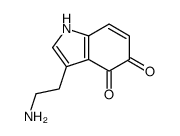 CAS#:108560-71-0
CAS#:108560-71-0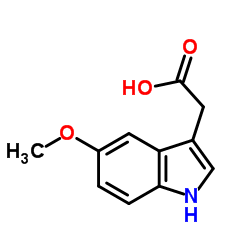 CAS#:608-07-1
CAS#:608-07-1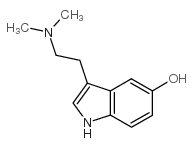 CAS#:487-93-4
CAS#:487-93-4 CAS#:1892-21-3
CAS#:1892-21-3![1H-Pyrido[3,4-b]indol-6-ol,2,3,4,9-tetrahydro-1-methyl- structure](https://image.chemsrc.com/caspic/158/3000-36-0.png) CAS#:3000-36-0
CAS#:3000-36-0![3,4,5,6-tetrahydro-7-hydroxy-6-methyl-1H-azepino[5,4,3-cd]indole structure](https://image.chemsrc.com/caspic/028/374680-35-0.png) CAS#:374680-35-0
CAS#:374680-35-0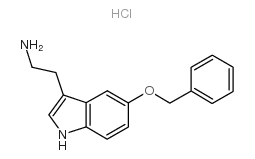 CAS#:20776-45-8
CAS#:20776-45-8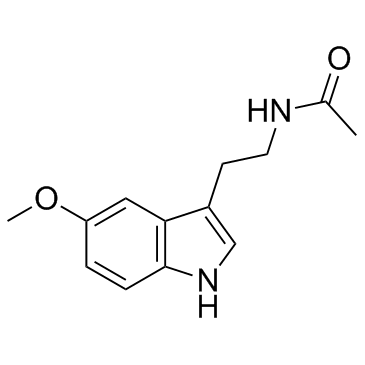 CAS#:73-31-4
CAS#:73-31-4![BENZYL[2-(5-HYDROXYINDOL-3-YL)-ETHYL]CARBAMATE structure](https://image.chemsrc.com/caspic/311/53157-50-9.png) CAS#:53157-50-9
CAS#:53157-50-9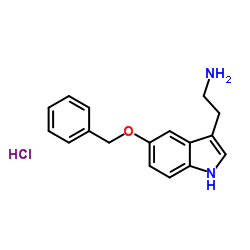 CAS#:52055-23-9
CAS#:52055-23-9
